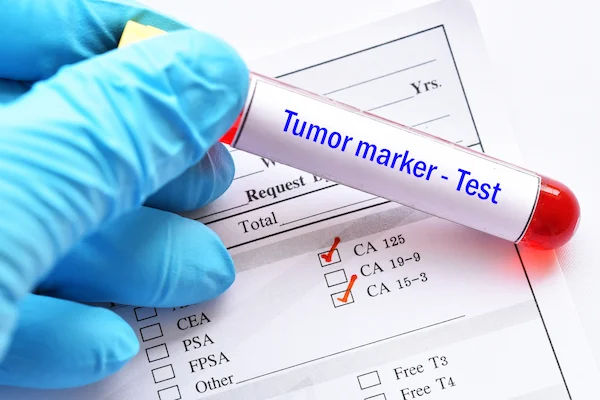Identifying The Symptoms of Throat Cancer
Learn key details about throat cancer, including early signs, treatment options, prevention strategies, and available support resources.

Written by Dr Sonia Bhatt
Last updated on 3rd Jul, 2025
Throat cancer develops in the pharynx or larynx, which connects the mouth to the oesophagus and lungs. The pharynx is made up of three parts: nasopharynx, oropharynx, and hypopharynx, while the larynx contains the vocal cords. As cancerous growths develop in these tissues, they can interfere with vital functions like breathing, speaking, and swallowing.
Early detection of throat cancer symptoms is crucial. This blog covers the risk factors, symptoms, treatment options, and tips on preventing throat cancer.
Causes and Risk Factors of Throat Cancer
Several key risk factors primarily drive the development of throat cancer, such as:
A sexually transmitted disease, human papillomavirus or HPV, particularly type 16 or 18
Smoking and usage of tobacco products
Alcohol consumption accompanied by tobacco consumption
Exposure to passive smoke
High-risk groups are:
Smokers and ex-smokers
Heavy alcohol consumers
People with HPV infection
People exposed to workplace risks such as asbestos, wood dust, or chemicals
Those with poor dietary habits who consume foods low in fruits and vegetables
People with weak immune systems
Those who have a hereditary background of throat cancer
Betel quid and gutka users, especially from Asian origin
Individuals with Epstein-Barr virus (EBV)
Early Signs and Symptoms of Throat Cancer
Common symptoms of throat cancer include:
Persistent sore throat
Changes in voice
Difficulty swallowing
Neck nodules (below the jawline)
Unexplained weight loss
Long-lasting cough
Throat discomfort
Red or white spots on tonsils or roof of mouth
Blood in saliva (advanced cases)
Recurrent bad breath
If symptoms last more than 2-3 weeks, seek medical advice. Diagnosis may involve physical exams, imaging, or biopsy. Early detection can improve treatment outcomes.
Consult Top Oncologist
Advanced Symptoms of Throat Cancer
In an advanced stage of throat cancer, symptoms may include:
Fatigue affecting daily activities
Shortness of breath (due to tumour size or treatment side effects)
Spread to surrounding tissue (neck, trachea, thyroid cartilage, oesophagus)
Palpable, enlarged, or shifted lymph nodes
Difficulty speaking, eating, or breathing
Impaired occupational and social functioning
These advanced symptoms can severely affect the quality of life and may require psychological support and comprehensive planning.
Diagnosis of Throat Cancer
Doctors use specific techniques to diagnose throat cancer, as shown below:
1. Endoscopy
It involves using specific instruments to examine the throat, allowing doctors to visually inspect any abnormalities that could indicate the presence of cancer.
2. Laryngoscopy
It is a procedure that examines the vocal cords closely, helping to detect any signs of swelling, lesions, or other changes that might be linked to throat cancer.
3. Biopsy
If suspicious areas are found during endoscopy or laryngoscopy, a biopsy is performed. This involves collecting tissue samples for further analysis, including HPV testing, to evaluate its potential role in cancer development.
4. Imaging Tests
CT (Computed Tomography), MRI (Magnetic Resonance Imaging), or PET (Positron Emission Tomography) scans are conducted to assess the spread of cancer. These imaging techniques help determine if the cancer has extended beyond its initial site, affecting surrounding tissues or distant organs.
5. TNM Staging System
This system classifies the cancer based on three criteria: T (tumour size and extent), N (lymph node involvement), and M (metastasis to distant organs).
6. Biopsy Margins
The biopsy helps identify whether the cancer has been fully removed. Clear margins indicate that no cancer cells remain at the edges of the tissue, while positive margins suggest additional surgery may be necessary to ensure complete removal.
Treatment Options for Throat Cancer
Management entails surgically resecting the tumour either through wide local excision or radical excision with adjuvant radiation therapy in view of killing cancer cells.
Chemotherapy can be prescribed to halt tumour development and alleviate the unpleasant symptoms of cancer.
In severe cases, targeted therapy is a good option for destroying cancerous cells.
Other treatment models include immunotherapy, in which the body's immune cells combat cancer.
Complimentary therapy involves the simultaneous use of several treatments to increase their efficiency.
Tumour-agnostic therapy targets specific genetic alterations in cancer without regard to the organ it originates from.
Novel drug delivery systems like Doxil provide improved chemotherapy administration methods.
Living with Throat Cancer
Patients diagnosed with throat cancer often experience a wide range of emotions.
Initially, they may feel shocked and scared, followed by feelings of anger. Over time, sadness may also set in as they process the diagnosis.
Dealing with cancer requires the patient to be able to cope with the experiences effectively, carry on any regular schedule as much as possible, and set achievable and realistic therapy goals.
Several types of support structures are available for patients to guide them throughout their treatments. Support structures such as the Health Minister’s Cancer Patient Fund and Rashtriya Arogya Nidhi are available under which financially weaker sections of society can be supported financially.
Organisations like UHAPO offer head and neck cancer support groups, and The Laryngectomee Society provides help to patients who have undergone laryngectomy. National-level cancer care organisations such as Tata Memorial Hospital provide complete cancer care, including integrated coping services and nutrition support.
Prevention and Risk Reduction
Specific preventive measures include:
Avoiding smoking cigarette and drinking alcohol
Eating a diet rich in fruits and vegetables
Exercise and stress management also help maintain health stability
Avoiding exposure to environmental pollutants, regular brushing, and annual dental visits may also help
Early diagnosis and constant medical examination are essential, especially among high-risk individuals
HPV vaccination is recommended from the age of 9 to 45 years to avoid HPV-related throat cancers, which saves nearly 90% of oral HPV-16/HPV-18 infections within four years of vaccination.
People with risk factors should get screened annually and report persistent symptoms to healthcare facilities.
Conclusion
Throat cancer is a challenging disease, but the prognosis improves if it is diagnosed early and treated promptly. Knowledge of risk factors, awareness of symptoms, and proper treatment modalities can help fight this disease. If individuals educate themselves and take precautions regarding throat health, the condition can be well managed despite its difficult symptoms.
Consult Top Oncologist
Consult Top Oncologist

Dr Devashish Tripathi
Radiation Specialist Oncologist
20 Years • MBBS, PLAB, MRCP (UK)- General Medicine, FRCR (Oncology), Certificate of Completion of Training (CCT)- Clinical Oncology
Delhi
Apollo Hospitals Indraprastha, Delhi

Dr. Praveen Kumar Garg
Surgical Oncologist
26 Years • MBBS, M.S.(Gen.Surg.), M.Ch.(OncoSurg.)
Delhi
Apollo Hospitals Indraprastha, Delhi
(50+ Patients)

Dr Sunita Samleti
Oncologist
18 Years • M.D. (Pathology)- TN Medical College, Mumbai University, Mumbai, Mar 2005 M.B.B.S. Grant Medical College, Mumbai University, Mumbai, Oct 1999
Chinagadila
Apollo Hospitals Health City Unit, Chinagadila

Dr. Prashant Chandra Das
Surgical Oncologist
15 Years • MBBS (MKCG Medical college) MCh (Surgical Oncology, Kidwai memorial institute of Oncology, Bangalore) MS (General Surgery, BHU Varanasi) Fellowship in Minimal Access Surgery ( FMAS). ESSO Course On Minimally Invasive Esophagectomy & Gastrectomy (UMC, Utrecht, Netherlands). Trained in Robotic and Laparoscopic Cancer Surgery.
Bhubaneswar
Apollo Hospitals Old Sainik School Road, Bhubaneswar
(25+ Patients)

Dr. Amit Choraria
Surgical Oncologist
18 Years • MBBS, MS (Surgery) Fellow, Surgical Oncology, Tata Medical Center (FSO) Fellow, European Board of Surgery (Surgical Oncology) (FEBS) Fellow, Minimal Access Surgery (FMAS) Fellow, Indian Association of Gastrointestinal Endosurgeons (FIAGES) UICC Fellow, Royal Marsden NHS, London, UK Visiting Scholar, Plastic Reconstructive Surgery, CGMH, Taiwan Fellow, Robotic Surgical Oncology, Vattikuti Foundation, USA
Kolkata
Apollo Multispeciality Hospitals , Kolkata, Kolkata
(50+ Patients)
Consult Top Oncologist

Dr Devashish Tripathi
Radiation Specialist Oncologist
20 Years • MBBS, PLAB, MRCP (UK)- General Medicine, FRCR (Oncology), Certificate of Completion of Training (CCT)- Clinical Oncology
Delhi
Apollo Hospitals Indraprastha, Delhi

Dr. Praveen Kumar Garg
Surgical Oncologist
26 Years • MBBS, M.S.(Gen.Surg.), M.Ch.(OncoSurg.)
Delhi
Apollo Hospitals Indraprastha, Delhi
(50+ Patients)

Dr Sunita Samleti
Oncologist
18 Years • M.D. (Pathology)- TN Medical College, Mumbai University, Mumbai, Mar 2005 M.B.B.S. Grant Medical College, Mumbai University, Mumbai, Oct 1999
Chinagadila
Apollo Hospitals Health City Unit, Chinagadila

Dr. Prashant Chandra Das
Surgical Oncologist
15 Years • MBBS (MKCG Medical college) MCh (Surgical Oncology, Kidwai memorial institute of Oncology, Bangalore) MS (General Surgery, BHU Varanasi) Fellowship in Minimal Access Surgery ( FMAS). ESSO Course On Minimally Invasive Esophagectomy & Gastrectomy (UMC, Utrecht, Netherlands). Trained in Robotic and Laparoscopic Cancer Surgery.
Bhubaneswar
Apollo Hospitals Old Sainik School Road, Bhubaneswar
(25+ Patients)

Dr. Amit Choraria
Surgical Oncologist
18 Years • MBBS, MS (Surgery) Fellow, Surgical Oncology, Tata Medical Center (FSO) Fellow, European Board of Surgery (Surgical Oncology) (FEBS) Fellow, Minimal Access Surgery (FMAS) Fellow, Indian Association of Gastrointestinal Endosurgeons (FIAGES) UICC Fellow, Royal Marsden NHS, London, UK Visiting Scholar, Plastic Reconstructive Surgery, CGMH, Taiwan Fellow, Robotic Surgical Oncology, Vattikuti Foundation, USA
Kolkata
Apollo Multispeciality Hospitals , Kolkata, Kolkata
(50+ Patients)



